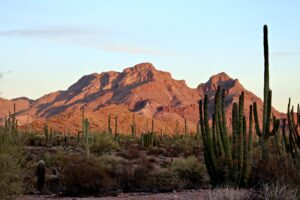News & Updates
Choosing Native Plants


Native pollinators in the United States are facing a massive decline. Studies have found that over 50% of native bee species in the U.S. are experiencing declining population numbers, with 25% facing a serious threat of extinction. However, if you have one, you can support pollinators, other animals, and the environment in your own personal green space- whether you have a balcony, small backyard, or a larger tract of land. At any size, you can take positive steps to support wildlife like native pollinators, birds, and mammal species and do your part to help slow this decline.

A great place to start is choosing native plants over ornamental or exotic varieties. Because native plants are adapted to the ecosystem where you live, they require less water and less intensive care than many ornamental species.
As an additional benefit to our neighborhood wildlife, the plant and animal species in your region have been co-evolving for thousands of years, so native plant species are accessible to pollinators while many non-native plants aren’t. Finally, native plants provide needed food to the wildlife in your area, like seeds for your native songbirds. Your local native plant society or garden club is a great place to find resources on where to start. You can support native plants on many scales; plant a pollinator garden in pots on your balcony if you live in an apartment or condo, or go big and replace your lawn with a mix of native grasses and wildflowers – every little bit counts.
Looking for information on your growing zones? The Xerxes Society, a pollinator advocacy organization, has some great resources to guide your creation of pollinator friendly habitats in your green space, and the National Wildlife Federation has a native plant finder tool to find plants for your area. If you don’t have a personal green space or want to do more- lobby your local government to choose native plants in your community parks and gardens and undertake habitat restoration projects.
REIMAGINING LAWNS
Grass lawns are one of the most resource intensive aspects of a home; the necessary water, pesticides, herbicides, fertilizers, and maintenance with gas powered equipment represent major environmental hazards. According to the Environmental Protection Agency, in the United States, nearly 9 billion gallons of water are used on residential lawns every day, much of it wasted due to inefficient watering techniques. Annually, Americans use about 200 million gallons of gasoline for mowing and other maintenance and 70 million pounds of pesticides to keep their lawns weed and grub free. These inputs cause ecological problems in the form of pollution, as runoff laden with pesticides can poison waterways, killing fish and harming human health.

This, in addition to the fact that grass lawns are ecological “dead zones”, meaning wildlife such as essential insects and other animals can’t survive in the human built lawn environment. So, if you have a lawn, there are many options available to you if you wish to reduce its environmental impact. The “no-mow” movement is gaining in popularity, and by simply not mowing your lawn or mowing less frequently you can create habitat for pollinators by allowing flowers to grow. In addition to mowing less, you can reduce lawn environmental impacts by watering less, choosing manual lawn care equipment over gas powered, and avoiding chemicals. If you want to do more, consider replacing the Kentucky Bluegrass with a native grass mix that requires less water and mowing; these seed mixes are increasingly available at garden and home improvement stores, or can be ordered from online greenhouses. If you live in an extremely dry zone, you can opt for a xeriscaped landscape of desert plants such as cacti and succulents.
Let’s protect and enjoy our natural world together
Get the latest in Leave No Trace eNews in your inbox so you can stay informed and involved.
